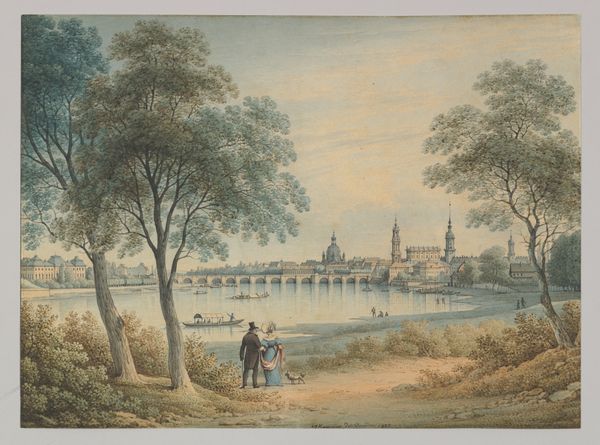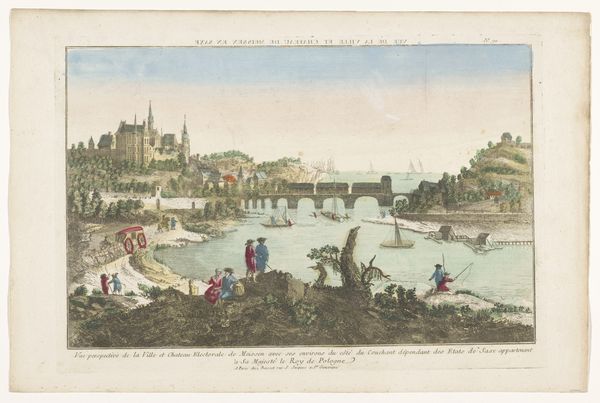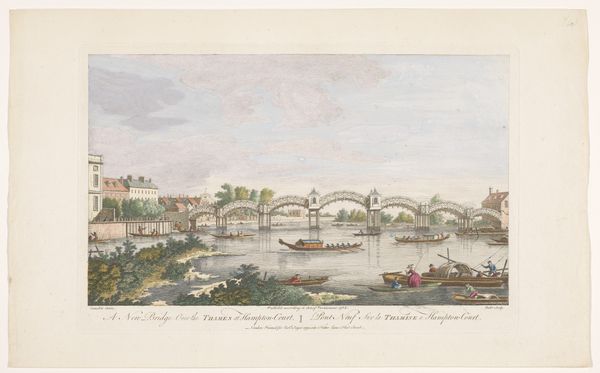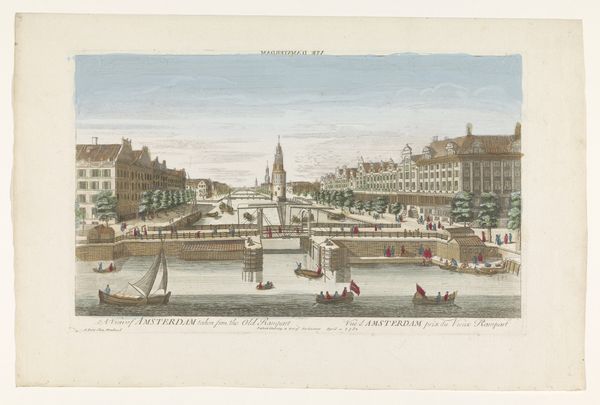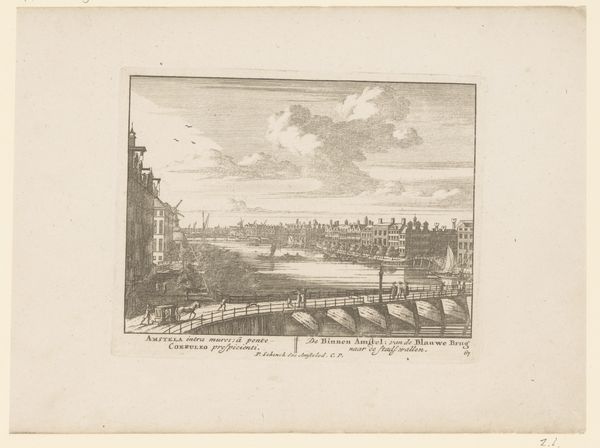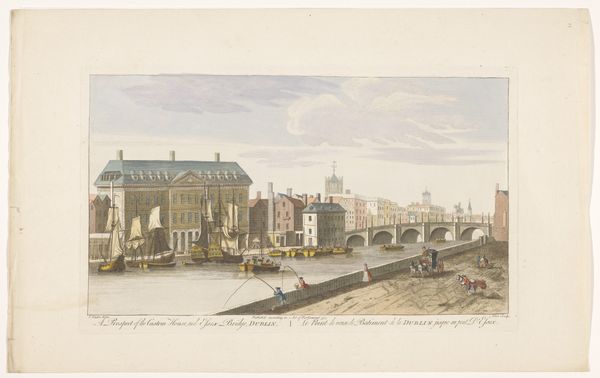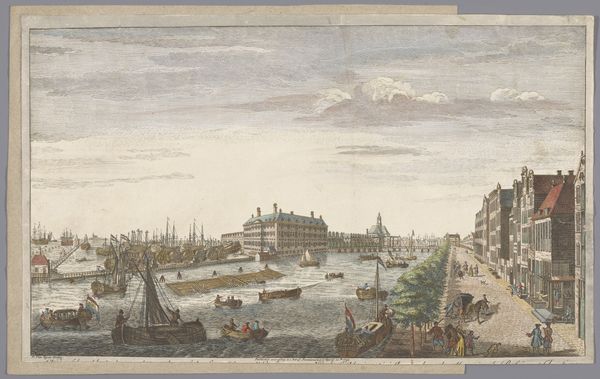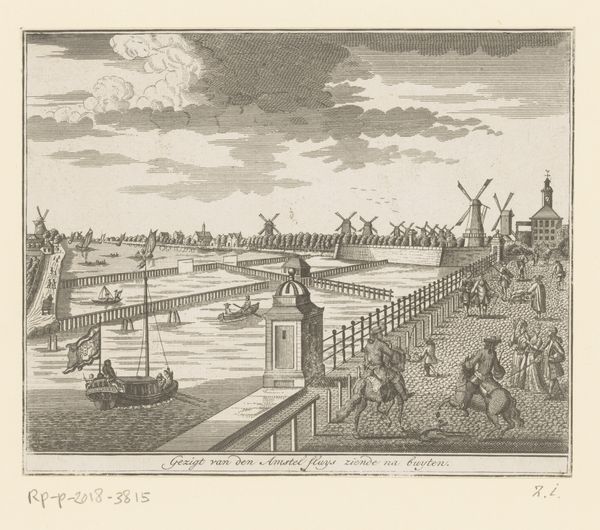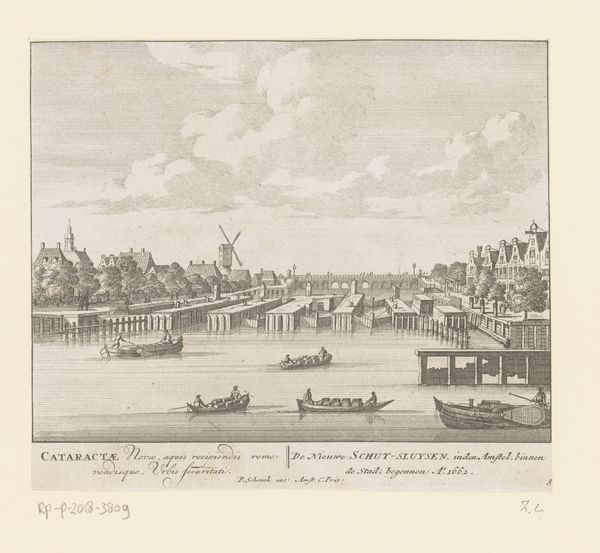
Dimensions: sheet: 29.1 x 47.1 cm (11 7/16 x 18 9/16 in.)
Copyright: National Gallery of Art: CC0 1.0
Curator: Let's consider "Dresden from the Banks of the Elbe River," a watercolor and ink drawing rendered in 1782 by Adrian Zingg. What strikes you immediately? Editor: It feels so tranquil, like stepping back into a hazy dream. I'm really drawn to the softness, the light just dances on the water and those dreamy spires. It almost doesn't seem real, you know? Curator: That resonates. The depiction offers an idealized vision characteristic of both Neoclassicism and early Romanticism, movements in dialogue at the time. There’s a tension, actually, between Enlightenment ideals of order, seen in the architecture, and this budding Romantic yearning for the picturesque. Editor: Picturesque, that's the word! But it’s not just pretty, is it? There’s all this activity on the riverbank. People working, loading things… what's going on there? Curator: Precisely. Zingg situates everyday labor—people working with timber, managing boats—within the grand panorama of Dresden. This reminds the viewer that cities, for all their architectural majesty, are built on the backs of a working populace. We might consider questions of class and labor as integral to the viewing experience. Editor: Ah, I see it. It's not just some pretty postcard, it’s a whole world contained. Makes you wonder about the lives of those folks down by the river, doesn’t it? What their days were like, what they believed in. Curator: Indeed. This artwork invites that kind of probing. It’s an opening, an invitation to think critically about how we represent history, urban space, and even whose stories are told in these vistas. Editor: I will leave contemplating the real Dresden, and all the stories it holds—both the grandeur and the grit! I can't look at any landscape the same way. Curator: A worthy takeaway indeed, this piece compels me to continue to excavate, question, and enrich our understanding of history, urban representation, and power dynamics of time.
Comments
No comments
Be the first to comment and join the conversation on the ultimate creative platform.
